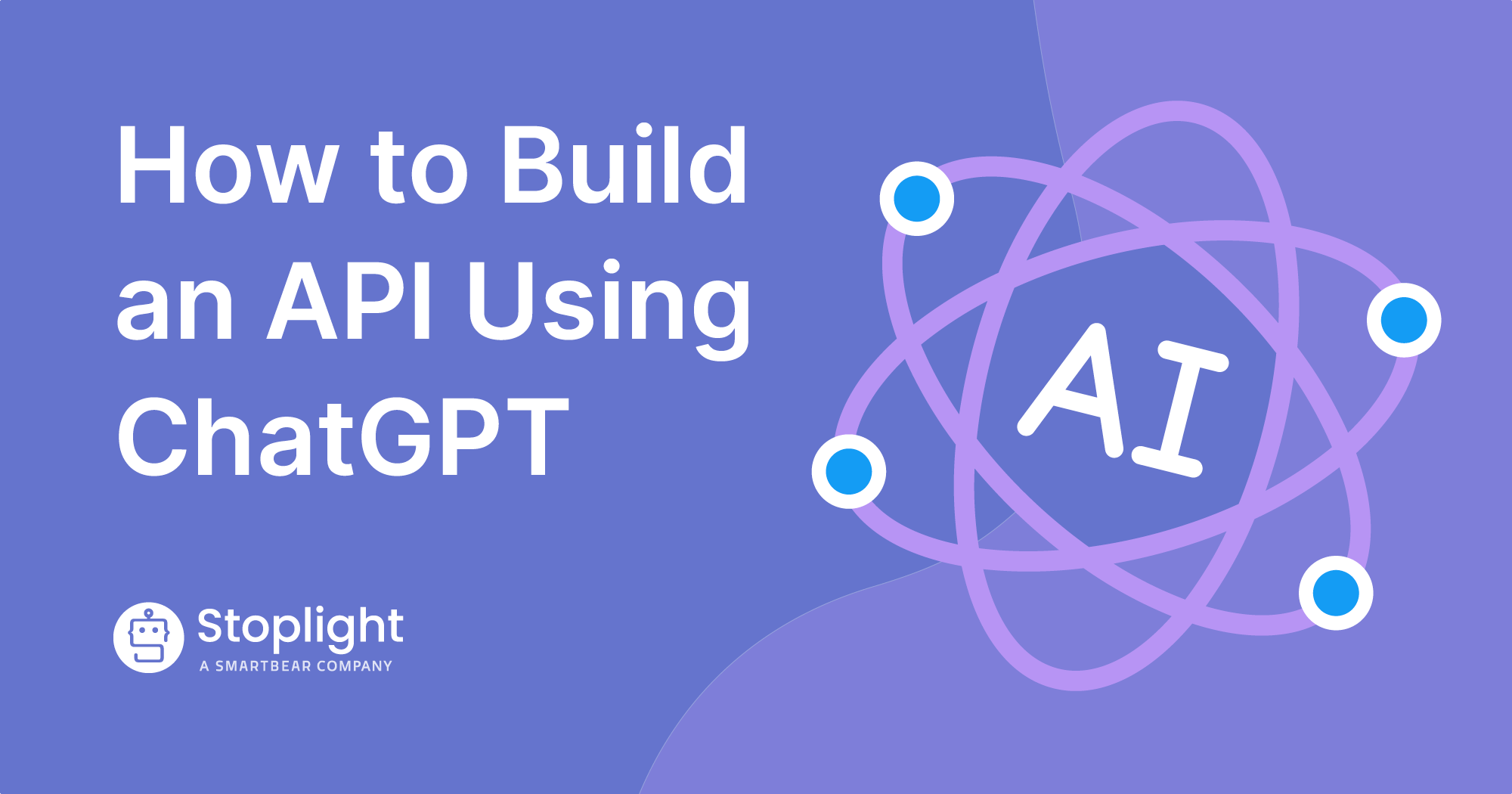Stoplight provides the tools you need to implement API-first and/or API-design first across your organization. See for yourself why companies are using Stoplight for both of these strategies and enjoy all the advantages thereof.
{{cta(‘b6f940a4-4441-46aa-8fd8-aa0f62e72c61′,’justifycenter’)}}
The terms API-first and API design-first are often used interchangeably, but they’re not entirely the same. This guide explores the API-first and API design-first approaches to building APIs.
API-First Approach
An API-first approach to building software products means that your organization treats APIs with importance, as reusable and easily accessible products that client applications consume. API-first means designing products around an API from the ground up, rather than building a product and adding an API later.
API-first means that you treat APIs as critical business assets, understanding the value they bring to your organization. You design each of your APIs around a contract written in an API description language like OpenAPI for consistency, reusability, and broad interoperability. Starting with an API contract allows you to better plan the design of your API and get feedback from stakeholders before writing any code.
Many APIs in use today have been around for more than two decades, but only in recent years have companies begun exploring and adopting the concept of API-first.
Emergence of API-First
The introduction of API-First coincides with the rise of microservices—individual, autonomous services that are loosely coupled and work together to provide services.
Companies like Netflix, Amazon, and PayPal have moved from monolithic to microservices architectures for their applications, with great success. The move to microservices allowed these companies to build highly scalable applications that provide an excellent experience for users. Many companies have followed suit.
O’Reilly recently conducted a survey around microservices adoption. The results show companies are finding success with the architecture and increasing their usage.
- 92% of respondents said they’ve had “at least some success” using microservices, while more than half (54%) describe their use of microservices as “mostly successful.”
- 61% of those surveyed said they’ve been using microservices for one year or more, and 28% have been using them for “at least three years.”
- 29% of respondents said that their organizations are migrating or implementing more than half of their systems using microservices.
Companies today are increasingly breaking down core business capabilities into individual, reusable services. They use these microservices to offer software applications that work dynamically to provide a good user experience (UX) on all devices, platforms, and screen sizes.
You can’t have microservices without APIs (and containers in some cases), so it makes sense that the concept of API-first has gained traction alongside the rise of microservices. Building APIs with an API-first approach helps ensure that developers can easily integrate your APIs with microservices architectures and applications. If you adopt an API-first strategy for building software products, you will enjoy many advantages.
Advantages of API-First
You gain consistent and reusable APIs when you adopt an API-first approach to building software products. Furthermore, with an API-first approach, you can:
Reduce Costs and Time to Market
An API-first approach allows you to build API services that you can reuse on multiple projects, so development teams don’t have to start entirely from scratch. Developers can use the same components on many different projects, saving a lot of time. Teams can spend time building only what they need to and plug in the rest of the components.
This approach allows you to break away from the waterfall model. Teams across the organization can adhere to a contract between services that lets them build multiple APIs simultaneously. So, instead of waiting for the completion or update of an API, you can immediately proceed with working on the next set of APIs.
You can also accelerate the API development process by using API description documents and third-party automation tools. With automation, you can significantly reduce the time it takes to get APIs and applications to market.
Reduce the Risk of Application Failures
Many companies that use an API-first approach to software development also dogfood their APIs, meaning they consume their APIs within their organization. When dogfooding your own APIs, you learn to make them reliable and consistent, and an API-first approach ensures decreased risk of application failures. API description documents allow you to create mock APIs to test designs before you spend time developing them. You can get feedback on your API designs and find problems before deploying the API.
Provide a Great Developer Experience (DX)
The most common consumers of APIs are developers, so developer experience will determine whether your APIs succeed or fail. An API-first approach will help developers have a rewarding and positive experience using your APIs. You can use API description documents and third-party tools to create some of the things that ensure a great developer experience, such as:
-
Style Guides – Style guides ensure developers across your organization build consistent APIs. With a JSON/YAML linter, you can easily create style guides for your APIs using API descriptions like OpenAPI, AsyncAPI, and RAML.
-
Client libraries and SDKs – Client libraries and SDKs help developers get started with your APIs more quickly. Some third-party tools automatically generate client libraries and SDKs from an API description document.
-
Documentation – Documentation helps developers understand your APIs and how they should work. With an API description document, you can use a third-party tool to create well-designed documentation — including code snippets—for your APIs automatically.
Future-Proof Applications
An API-first approach means that you’re creating individually consumable services. Developers can easily plug specific services into their applications and leave out anything they don’t need. If you decide to shut down a component API service, developers can replace that API individually without disrupting the user experience or rewriting large parts of the application code. When developers request the latest cutting-edge features, you can update an API or add a new API without rewriting the application nor touching the other APIs in use.
API Design-First Approach
An API design-first approach is about describing every API design in an iterative way that both humans and computers can understand—before you write any code. Where API-first is about putting APIs front and center, API design-first is about the process of creating the API itself.
With an API design-first approach, every team speaks the same language, and every tool they use leverages the same API design. You will create more consistency and reliability within your API program by following a repeatable, scalable process, where you:
- Determine Your API Guidelines and Development Process
- Collaborate Around API Design Documents
- Automate Some of the API Design Review Process
The API design-first process begins with every stakeholder participating early in the API design phase, writing an API contract that satisfies all parties and ensures humans and machines understand the finished product.
Design-first means teams spend a lot of time in the design phase while working with stakeholders and using automated tools to get feedback on API designs early and often. All this time spent in the design phase ensures that when teams finally start coding, they’re writing the correct code.
Advantages of API Design-First
Both API-first and API design-first approaches involve planning and designing the API with stakeholders before writing any code. So, they both share some of the same advantages, such as:
- Work in parallel – With API description documents, teams can create mock servers and mock APIs to try out API designs, build API clients, and test APIs before production. They don’t have to wait on other teams to complete different stages of the API.
- Ensure a positive DX – Working with stakeholders on the design from the beginning helps ensure your APIs are consistent, easy to use, and work the way developers want them to. Consistent API designs also make it easier for developers to understand your APIs, lessening the learning curve.
- Reduce development costs – Working out design flaws before coding costs far less than fixing code issues once an API is deployed. You also reduce development costs by building API components once and reusing them on many projects.
API design-first offers additional advantages like:
- Improved communication – By collaborating around API design documents that both humans and machines can understand, you improve communication among all stakeholders. Teams can find API design and architecture mistakes faster with an understandable design. Product managers can help shape the features of your APIs during the design phase to meet customer requirements. With an understandable design, business leaders who may not have advanced technical skills can provide valuable feedback on API designs.
- Better API security – With an API design-first approach, you can create APIs that are not only well-designed and consistent but also highly secure. You can involve cybersecurity experts early in the design process, helping to ensure endpoints don’t have vulnerabilities hackers could exploit. When customers request new API capabilities, you can easily add new endpoints while also conferring with the cybersecurity team to ensure those changes won’t create security issues.
Now that you know the advantages of API-first and API design-first, you can decide which approach would work best as your API source of truth. You may even choose to use both methods to improve your API program.
Your API Source of Truth
API-first and API design-first share some of the same processes and benefits, but the terms are not interchangeable.
- API-first is a mindset where APIs are as important as other crucial components of the business.
- API design-first is about making your APIs understandable to all stakeholders while optimizing the design process.
API-first and API design-first emphasize the importance of design documents and contracts. And they both provide a reliable source of truth for API design and development teams, especially if you apply these approaches with the right tools.
Additional Resources
- Why You Should View Your APIs as Products
- How to Deliver a Great Developer Experience with Your APIs
- How to Bring Design-First APIs to Your Organization
- 4 Reasons Why You Should Approach APIs with a Design-First Mindset
- Stop Calling Your APIs Microservices
- API Design-First vs. Code First
- A Practical Guide to API Design-First


